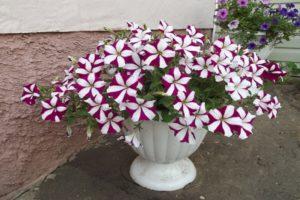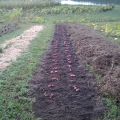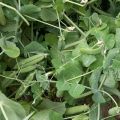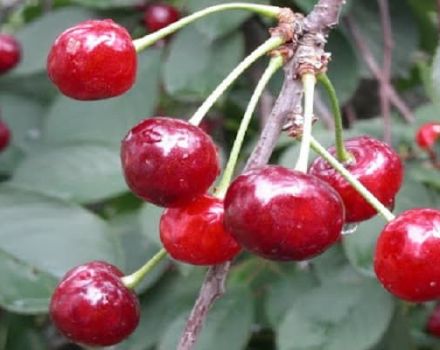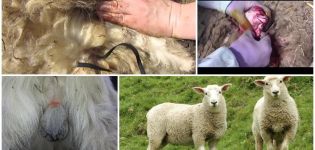Features of growing lupine as a siderat and when it is better to sow it
Gardeners have returned to the old method of restoring soil nutrients with plants. As a siderat, lupine is planted in their plots. Perennial varieties of this type are used for long-term soil rest. Annual varieties are planted before planting or after harvest. The plant has established itself not only as a green manure for the soil. Some varieties of lupine are used as fertilizer.
Content
What is good about lupine, like siderat
Over time, the land in the garden and vegetable garden is depleted. Restore the nutritional properties of the soil with fertilizers or planting green manures. One of the representatives of such plants is lupine.
Minuses
A plant planted in the form of green manure can harm if the requirements of agricultural technology are not met:
- The siderates are mowed in time. The delay leads to a thickening of the stem and its prolonged decomposition. This leads to the process of decay, the formation of fungal, viral diseases.
- Lupine seeds are scattered over the site, rather than planted in rows. This planting pattern protects the soil from weeds.
- Eliminate neglect of plantings, do not grow to maximum growth. When decomposed, green manure forms a large amount of nitrogen. Future crops simply “burn out” when planted.
- Precursors of the same family are excluded, since the soil tends to retain common pests.
All types of lupine contain toxic alkaloids to varying degrees.

pros
Gardeners often choose lupine for soil restoration for its positive characteristics:
- Thanks to its long roots, it draws nutrients to the surface from the depths without disturbing the upper nutrient layer of the earth.
- Enriches the soil with nutrients, trace elements, oxygen.
- Grows green mass quickly.
- He loves green manure soil with an acid reaction, eventually turning it into alkaline.
- Unpretentious plant. Requires minimal maintenance.
- Makes the soil loose, healthy. Kills harmful bacteria thanks to the element in its composition - lupinine.
- Autumn plantings trap snow, preserve the integrity of the site from erosion.
Correct technology, care will lead to rapid soil recovery.
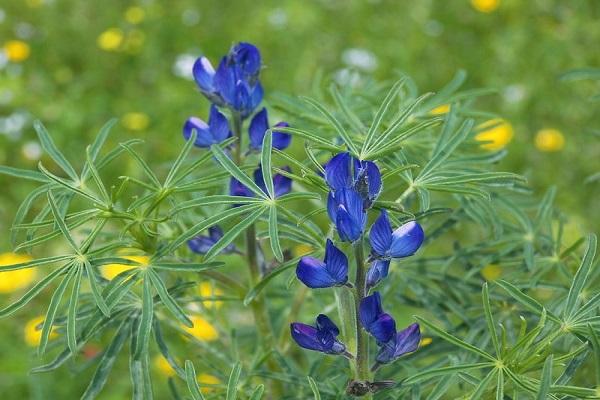
What elements enriches the soil
When grass decomposes, nitrogen is formed in the soil - up to 20 grams per square meter. As a result, the soil is enriched with nitrogen fertilizer. Nutrients are allocated: organics, potassium, iron, phosphorus, calcium, sulfur.Due to these elements, the soil is restored.
Interaction with other cultures
Using lupine as a siderat, you should not plant other crops for the same purpose. The plant copes alone with the assigned tasks. Otherwise, different cultures will start fighting for better conditions. The neighborhood will lead to negative consequences.
Lupines are sometimes planted in the aisles between vegetables - this is the right decision. Moreover, in this case, all varieties of green manure are suitable. The grass will provide a high yield to the crop. The main thing is to cut siderates in time.
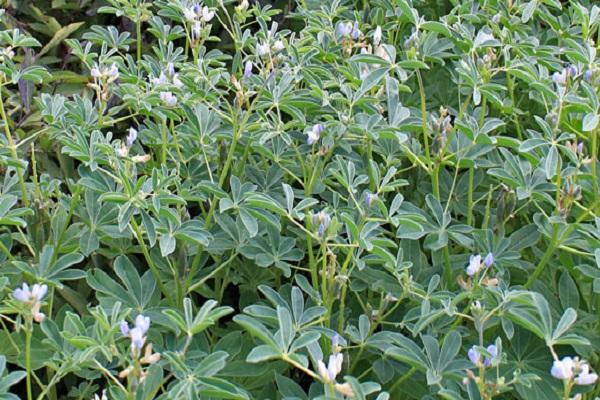
What type of plant is used as fertilizer
Of all the varieties of lupine, a narrow-leaved species is chosen as a fertilizer, due to a special substance in the root. The plant is distinguished by the rapid growth of green mass, the development of the root system. At the same time, leaving is required minimal. 2-3 years after planting and plowing of narrow-leaved lupine, the top layer of the earth is saturated with nitrogen, useful microelements, and a loose soil structure is formed.
Popular varieties used as fertilizer: Vityaz, Smena, Beloozerny, Kristall, Siderat 38, Nadezhda, Snezhet, Raduzhny.
Types and description of varieties of annual lupine
The legume family, which includes lupine, has up to 200 subspecies. There are perennial, annual varieties. They grow like herbaceous, semi-shrub plants. Annual, herbaceous varieties are chosen as green manure in Russia. In agriculture, three types are used: yellow, white, blue. Among perennial varieties, the perennial lupine is popular as an ornamental plant.
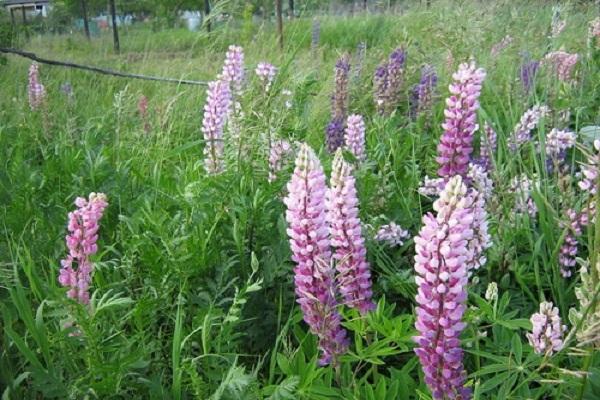
White Lupinus albus
The white lupine species is grown in the southern regions. Since the plant is thermophilic, it stretches up to 2 meters. Likes to grow in sunny areas. The leaves are large, always directed towards the sun. They are obovate. The leaf plate is fleecy below, smooth above. Whorled and alternate inflorescences are collected in an ear, 30 centimeters long. Legume pods, when ripe, have 5-6 white seeds.
Grown as green manure and animal feed. It contains fewer alkaloids than its counterparts. Known subspecies: Degas, Desnyansky, Gamma.
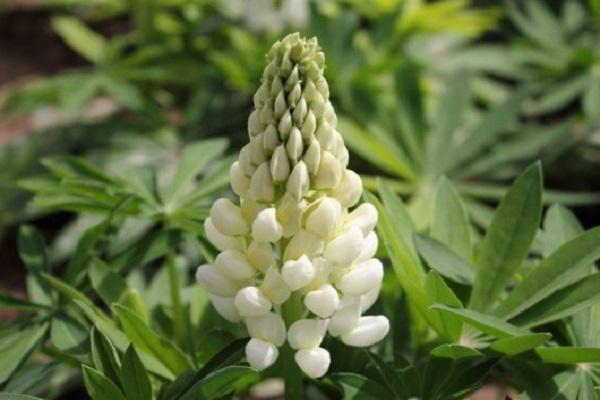
Blue and narrow-leaved Lupinus angustifolius
The blue or narrow-leaved lupine species is frost-resistant. Stretches up to 1.5 meters. Spike inflorescences, depending on the variety, are blue, purple, pink, white.
The root goes to a depth of 1.5 meters. Varieties of the narrow-leaved species are used as siderates, fertilizer. They are rarely used for decorative purposes. For example, Sidirat 38 is used only as a fertilizer. It contains derivatives of ethyl alcohol.
Famous varieties of this species: Nemchinovsky, Pink 399, Crystal.
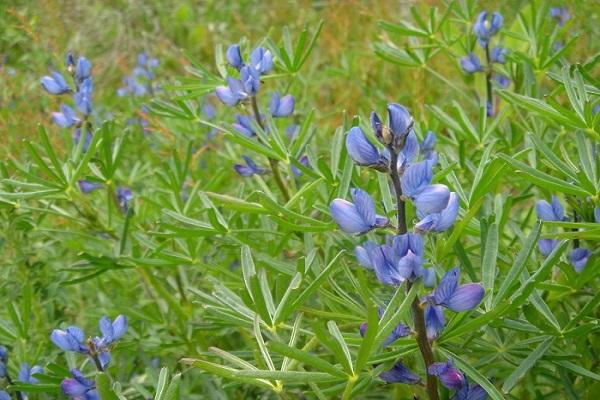
Yellow Lupinus luteus
Compared to other species, yellow lupine is stunted. The stem extends up to one meter. Loves warm regions, withstands small frosts (-5 degrees). The soil for planting is sandy loam, sandy, with a neutral reaction. The species is picky about lighting and watering.
Famous varieties: Fakel, Akademichesky, Peresvet and Grodno, Prestige.
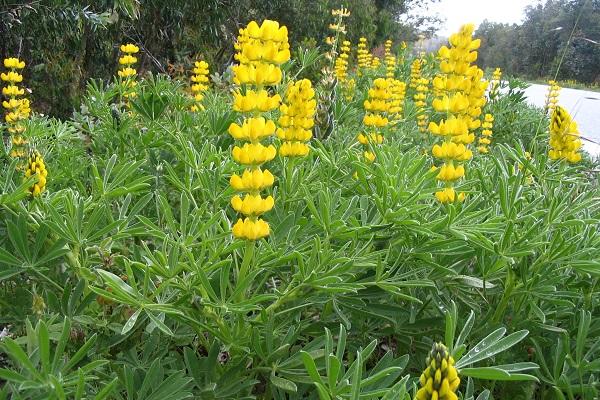
Basic principles of cultivation
When planting, take into account predecessors, planting time. In the future, the grass requires the removal of weeds and timely mowing.
Before which crops to use
The plant is sown in one place for no more than 4 years. Unwanted precursors are perennial legumes, crucifers, cereals, and legumes. Common pests and diseases persist in the soil.
Sowing terms and technology
In the spring, as soon as a stable temperature is established without frost, the grass is sown in open ground. In the autumn, plantings are sown after harvesting vegetables or in August.

First option
The site is freed from weeds, the seeds are scattered over the surface of the field and the soil is loosened so that the seeds are at a depth of 4-10 centimeters. To make the seeds germinate better, they are scarified before planting.
Second option
In grooves with a step of 5-15 centimeters between seeds, 15-30 - in rows. Planting depth - 4-10 centimeters. One hundred square meters requires 3 kilograms of planting material.
Plant care rules
Weeds appear faster than crops. Therefore, they are regularly removed from the site. To do this, use a lightweight harrow and rake to harrow the soil 4 days after sowing. The second loosening is carried out with seedlings growing 10-15 centimeters. The third treatment is repeated after 7 days. Watering is carried out as the soil dries out.
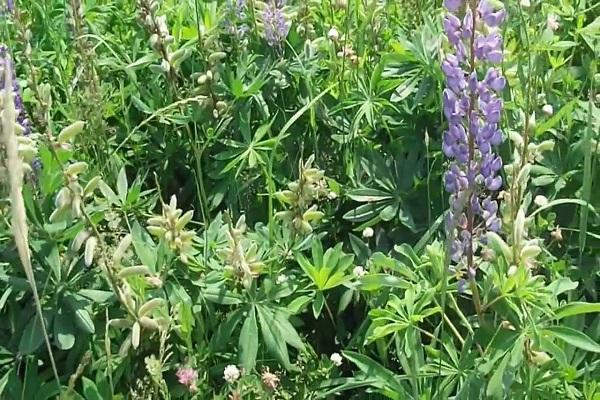
When to clean up
The main condition for growing green manure is timely mowing. On the 55-60th day after sowing, the siderates are cut off. Lupine should not be allowed to bloom. The inflorescences will take away all the nutrients.
Siderata are mowed in cloudy morning weather. After mowing, the grass is cut and left on the field. If the weather is dry, the area is watered and covered with earth. Thick stems are selected, sent to a compost pit. Autumn sowing is mowed in October, before the onset of frost.

Possible difficulties in growing a crop
It happens that lupine does not want to grow on the site. The reason lies in the composition of the soil. Check the soil for acidity before planting. In earth with an alkaline reaction, lupine does not grow. Only on sour, neutral.
Weeds emerge earlier than green manure. Remove weeds while the seedlings are small. In the future, the plants will "kill" the entire weed. Watering is needed for young seedlings. Adult specimens no longer need watering, since the root goes to a great depth.

